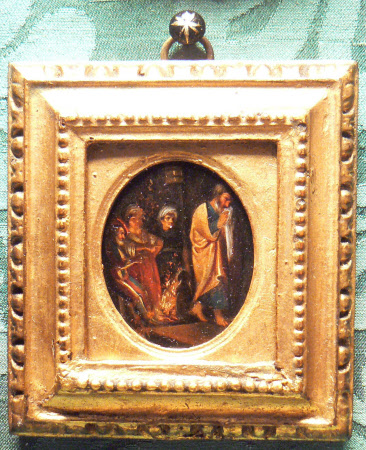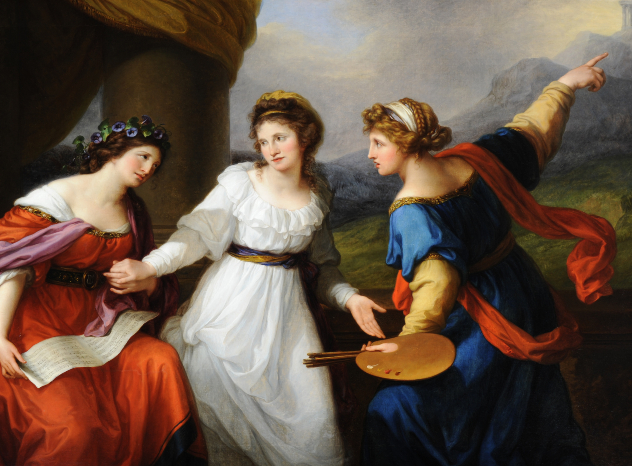The Denial of Saint Peter
German School
Category
Art / Oil paintings
Date
1600 - 1629
Materials
Oil on copper
Measurements
85 x 79 mm
Place of origin
Germany
Order this imageCollection
Ham House, Surrey
NT 1140261
Summary
Oil painting on copper, The Denial of Saint Peter, German School, early 17th century. Saint Peter, dressed in blue and golden yellow, holding a white cloth to his face, turns his back on three people seated round a fire, and walks away from it; a lantern hangs above. The middle figure in the group he turns his back on is a maid-servant, clothed in a red dress with white sleeves and trim, who points to Peter with her right hand. A dog sits in front of the fire with its back to us. All four Gospels in the New Testament tell the story of Peter’s triple denial of Christ after the latter’s arrest (Matthew 26: 69–75; Mark14: 66–72; Luke 22: 55–62; and John 18: 25–27), and the last three all mention him warming himself when he was first detected. Only St Luke, however, makes his bitter tears (such as are suggested by his gesture of covering his face here) follow directly upon his quitting his accusers. There is a drawing by Elsheimer that appears to show Saint Peter being accused of being a follower of Christ by a maidservant (private collection, Zurich in Keith Andrews, Adam Elsheimer: Werkverzeichnis der Gemälde, Zeichnungen und Radierungen, Munich, 1977, Kat.Nr.33, p.194 & pl.17), but it is, naturally, very different in composition from this. Interestingly, however, not only did the posthumous inventory of Elsheimer’s studio contain an unfinished painting on copper of the subject – ‘Un Rame abozzato di prospettiva dove doveva essere l’istoria di S. Pietro quando negò Gesu Christo Nostro Signore’ – but an auction held by Abraham Mattys in Antwerp in 1649 contained a small copper by Elsheimer, apparently showing Saint Peter before he got up and left the fire: ‘een cleyn copere plaert daer Ste Pieter hem wermt, Helhamer, no.104’. It is possible, therefore, that this is a copy of some other lost composition by Elsheimer.
Credit line
Ham House, The Dysart Collection (purchased by HM Government in 1948 and transferred to the National Trust in 2002)
Makers and roles
German School, publisher

